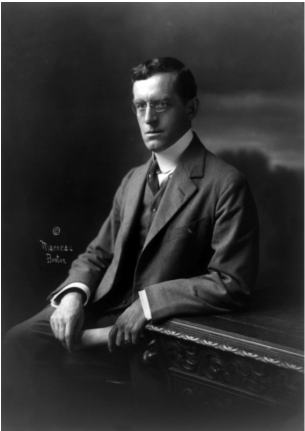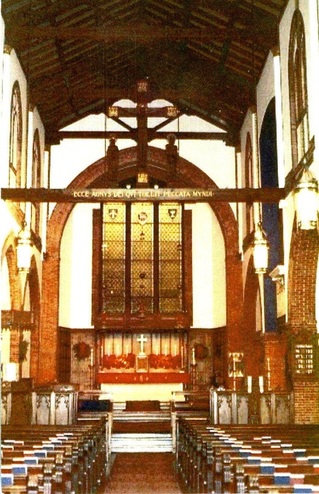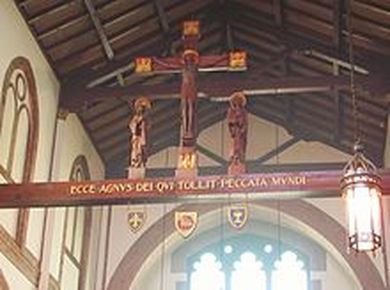An Historic New Building
 Ralph Adams Cram (1863 - 1942)
Ralph Adams Cram (1863 - 1942)
Following the fire of 1912, Dr. Schwartz secured the services of Dr. Ralph Adams Cram of the Boston firm of Cram, Goodhue and Ferguson as the consulting architect for the church’s repair.
Cram is remembered today as the foremost American authority on Gothic architecture in the 20th century. He became widely known for St. Thomas Episcopal Church in New York City (1905) and for his redesign of the Cathedral of St. John the Divine as a Gothic structure in 1911. In addition to work on numerous churches, he also designed several buildings for Princeton University and the US Military Academy at West Point. In 1912 Cram was at the height of his fame. It appears that Dr. Schwartz knew Cram personally.
Cram's contribution to church architecture is of such magnitude that he is honored on the Liturgical Calendar of the Episcopal Church with a feast day on his birthday, December 16th.
"Gracious God, we offer thanks for the vision of Ralph Adams Cram, John LaFarge and Richard Upjohn, whose harmonious revival of the Gothic enriched our churches with a sacramental understanding of reality in the face of secular materialism; and we pray that we may honor thy gifts of the beauty of holiness given through them, for the glory of Jesus Christ; who liveth and reigneth with thee and the Holy Spirit, one God, in glory everlasting. Amen."
From the Episcopal Church's "Holy Women, Holy Men"
Cram is remembered today as the foremost American authority on Gothic architecture in the 20th century. He became widely known for St. Thomas Episcopal Church in New York City (1905) and for his redesign of the Cathedral of St. John the Divine as a Gothic structure in 1911. In addition to work on numerous churches, he also designed several buildings for Princeton University and the US Military Academy at West Point. In 1912 Cram was at the height of his fame. It appears that Dr. Schwartz knew Cram personally.
Cram's contribution to church architecture is of such magnitude that he is honored on the Liturgical Calendar of the Episcopal Church with a feast day on his birthday, December 16th.
"Gracious God, we offer thanks for the vision of Ralph Adams Cram, John LaFarge and Richard Upjohn, whose harmonious revival of the Gothic enriched our churches with a sacramental understanding of reality in the face of secular materialism; and we pray that we may honor thy gifts of the beauty of holiness given through them, for the glory of Jesus Christ; who liveth and reigneth with thee and the Holy Spirit, one God, in glory everlasting. Amen."
From the Episcopal Church's "Holy Women, Holy Men"
|
The challenge to the architects was to create a lofty and spacious effect within the existing walls (that had survived the fire.). This was achieved by leaving the nave open to the exposed beams of the roof and lowering the floor by sacrificing the basement rooms that had previously been located there. To the rear would be a three story Parish House, which included a sacristy, Sunday School rooms, dining room, kitchen, a hall for public gatherings, and two small apartments for a sexton and a curate. The total cost of all construction was $36,000 and it was paid for in full upon completion, in large part due to the labors of Dr. Schwartz.
The first service in the reconstructed church was on Easter Sunday, March 23, 1913. |

